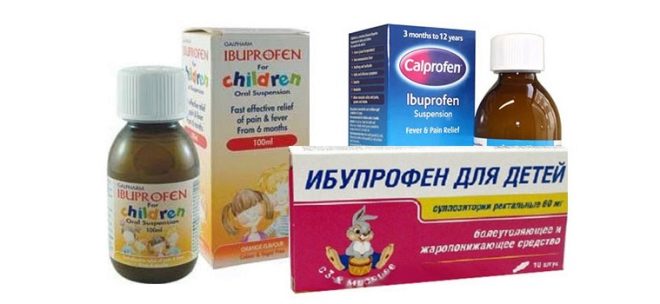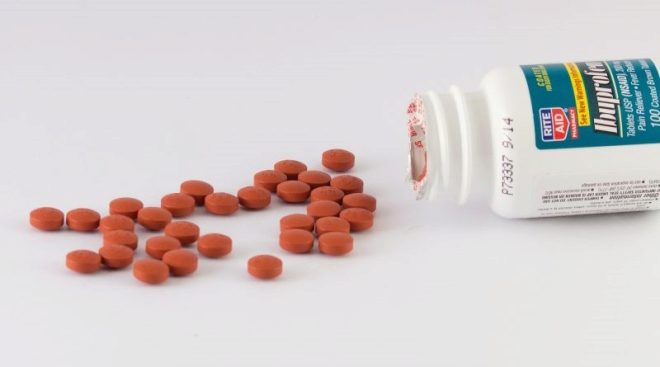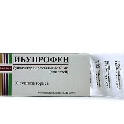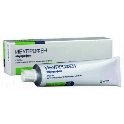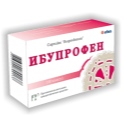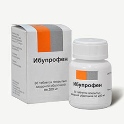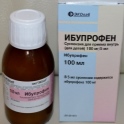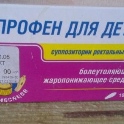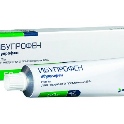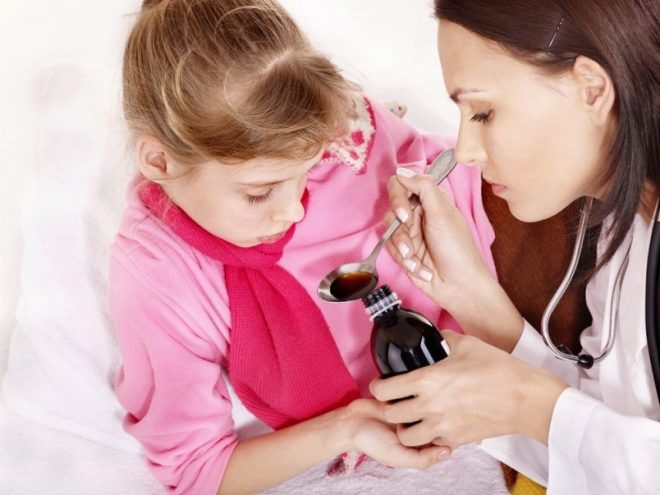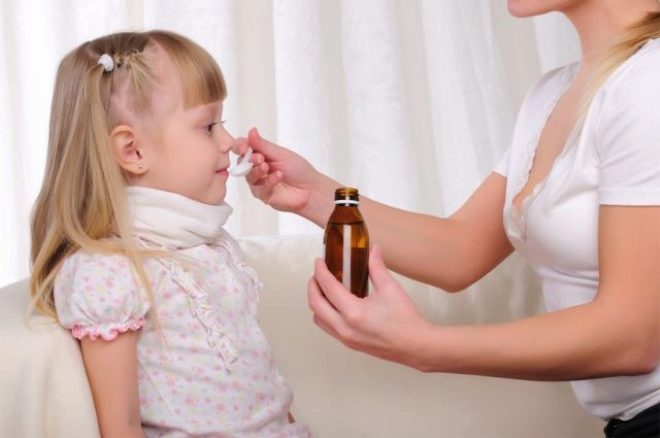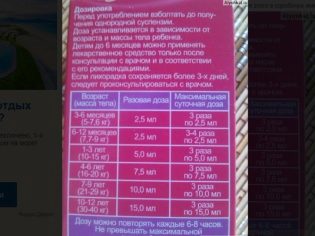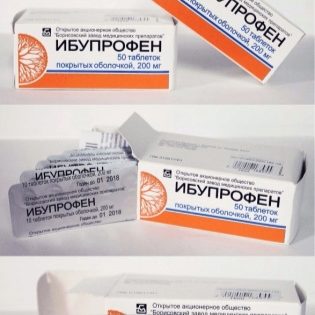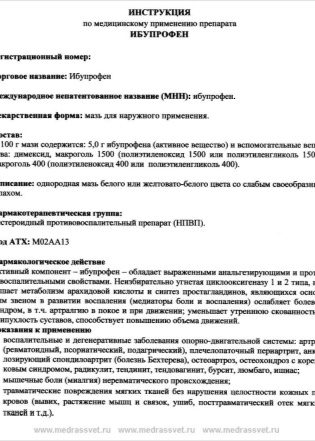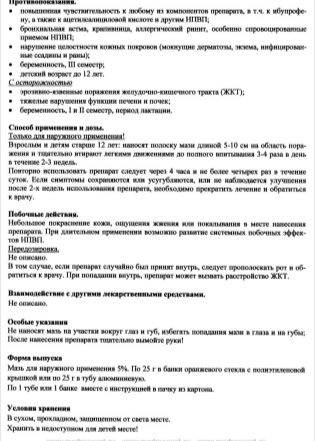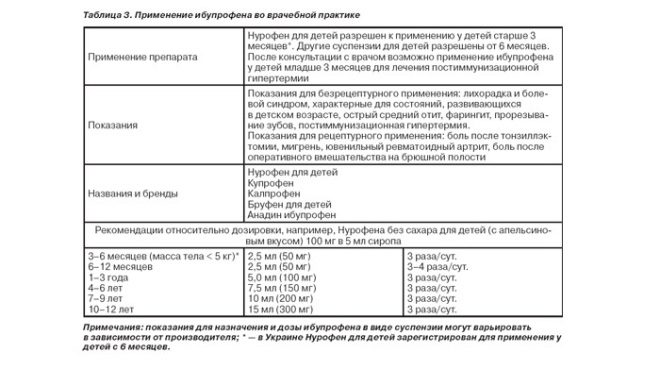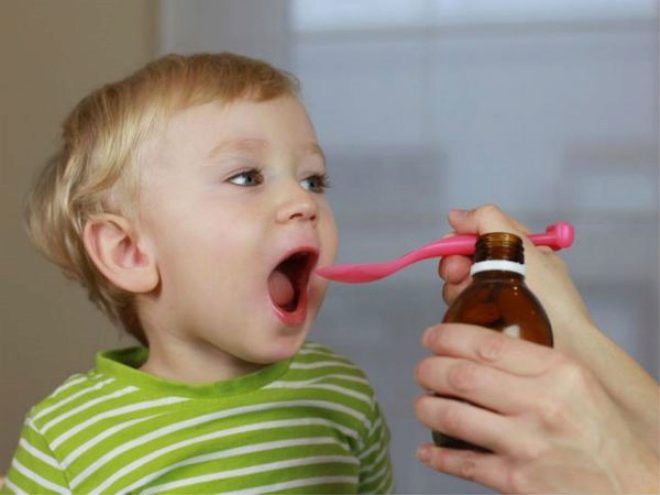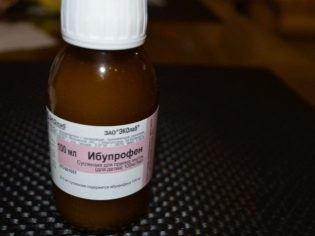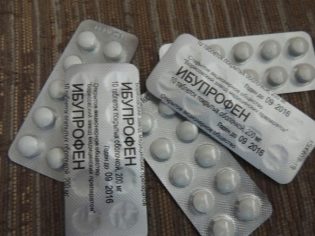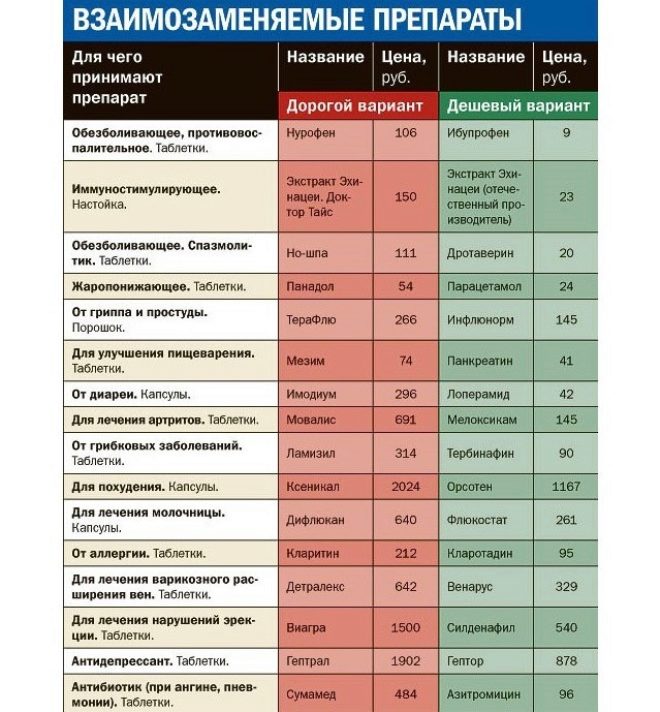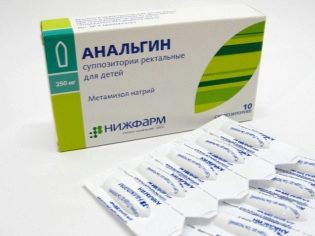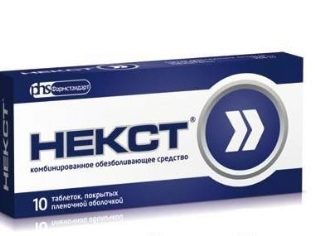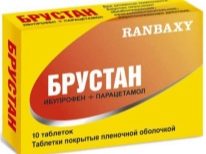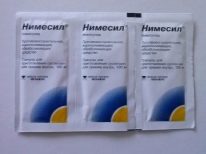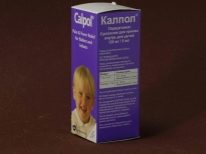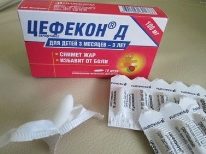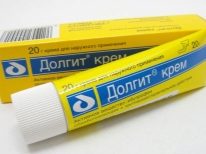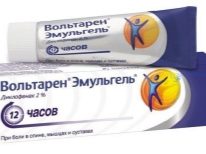Ibuprofen for children
Ibuprofen is one of the most popular drugs to help get rid of pain or reduce body temperature during fever. Such a medicine is produced by many manufacturers and is offered in several forms suitable for children of different ages.
What drug to choose for infants, and which should not be given to a child of 5 years, how does ibuprofen affect the body of babies and what side effects can it provoke? What doses of Ibuprofen should not be exceeded in childhood, so as not to cause harm to the child, and with what analogues can it be replaced? Such questions are relevant for any mother, because high temperature or pain occur in all children.
Release form
Ibuprofen is available in pharmacies with the following options:
- Suppositories. They have a smooth surface, white tint and elongated shape. Such rectal candles sold in a pack of 10 pieces.
- Suspension. This drug is tart sweet, it smells like orange and is packed in plastic or glass bottles of 100 ml. A spoon or syringe is attached to the bottle to accurately measure orange (Ibuprofen-Akrikhin) or white-cream medicine.
- 5% ointment. It is represented by a yellowish white or white homogeneous mass, which has a slight peculiar smell. One tube includes 25 grams of ointment.
- Pills. They are produced by different companies in two dosages. These tablets are round and have a pink, white and yellow or white casing. One pack contains from 10 to 50 tablets.
- 5% gel. It is produced in the form of a light yellow or colorless transparent substance, which has a specific smell. One tube can contain from 20 to 100 g of gel.
- Capsules They have a white body and a green cap, and inside these gelatin capsules there is a white-yellow or white powder. They are sold in packs of 10-100 pieces.
Composition
The main component of any form of medication due to which the drug has a therapeutic effect is called ibuprofen. Its amount in different types of medication is different:
- One candle contains 60 mg.
- From 5 ml of suspension, 100 mg is obtained.
- 1 g of ointment or gel contains 50 mg.
- One tablet contains 200 or 400 mg.
- 1 capsule contains 200 mg.
Auxiliary substances in different forms of Ibuprofen are also different:
- In candles, these are only solid fats, and there are no other chemical additives.
- The suspension contains citric acid, orange flavoring, glycerol, sorbitol and other substances.
- The ointment includes macrogol 400, dimexide and macrogol 1500.
- The tablets can contain ingredients such as sucrose, stearic acid, beeswax, corn starch, hypromellose, and others.
- Lavender oil, ethyl alcohol, propylene glycol, neroli oil, dimexide and other substances act as additional components of the gel.
- The capsules contain magnesium stearate, talc, gelatin, croscarmellose sodium and other compounds.
Operating principle
Once in the child’s body, ibuprofen affects the formation of substances called prostaglandins. They are responsible for the development of the inflammatory process and the conduct of pain impulses, so the main effects of the drug are a decrease in the activity of inflammation and anesthesia.
In addition, these compounds are responsible for the increase in body temperature in response to infection by viruses, bacteria or other factors, so the use of Ibuprofen helps in the fight against fever.
The effect of the drug develops after 20-40 minutes after its use, and the duration of the therapeutic effect depends on the form used, the dosage and the patient's age. For example, rectal suppositories have a very long action (up to 8 hours), and the antipyretic effect of tablets or capsules lasts up to 3-4 hours.
Indications
Ibuprofen is a popular symptomatic remedy for painful sensations of a different nature. It is prescribed for children with ear pain due to otitis media, painful teething, muscle pain or ligament for injuries, headache for IRR and in other situations. Medication copes with moderate or mild pain.
In addition, the drug is often used as a febrifuge. It is prescribed for chickenpox, flu, colds, sore throat and other diseases, one of the symptoms of which is fever. No less often, it is recommended to give children who have a fever after vaccination.
In addition, the drug is often used as a febrifuge. It is prescribed for chickenpox, flu, colds, sore throat and other diseases, one of the symptoms of which is fever. No less often, it is recommended to give children who have a fever after vaccination.
The drug is also in demand as an anti-inflammatory agent. It is prescribed for arthritis, bursitis, tendinitis, inflammatory complications after surgery and in other cases. Especially often when such problems are applied local forms - gel and ointment.
At what age is it allowed to take?
Ibuprofen is contraindicated in children who have not yet turned 3 months. The three-month-old toddler medication is prescribed in the form of candles or suspensions. In this case, suppositories are recommended to use up to 2 years of age, and the suspension - up to 12 years. In addition, the prescription of medication for babies 3-6 months must be supervised by a pediatrician.
Solid form is not used in children under 6 years of age or in older children, but with a weight of less than 20 kg. Such restrictions apply to tablets and capsules containing ibuprofen at a dose of 200 mg. The drug with a dosage of 400 mg in 1 tablet is prescribed to adolescents 12 years and older. The use of 5% gel is recommended from 6 years of age, and 5% ointment - only from 12 years.
Contraindications
The drug is not prescribed:
- In case of ulcerative or inflammatory diseases of the gastrointestinal tract, as well as bleeding from the intestine or stomach.
- If you are intolerant of any drug ingredient or allergies to other nonsteroidal anti-inflammatory drugs.
- With blood diseases.
- In violation of the liver or kidneys.
- When hearing loss.
- With an increase in the amount of potassium in the blood.
Suspension is also contraindicated in glucose-galactose malabsorption and is prescribed with caution in children with diabetes. Gel and ointment is not prescribed for eczema, weeping dermatoses and skin lesions. The presence of any chronic disease in a child requires, when using Ibuprofen, increased medical attention.
Side effects
- Ibuprofen often causes negative symptoms of the gastrointestinal tract, including nausea, abdominal pain, liquefied stools, heartburn, and others.
- The drug can cause itching, bronchospasm, rash, angioedema, or another form of allergy.
- When treating ibuprofen, children often complain of headaches or dizziness. In some patients, mothers noted an excited state, drowsiness, anxiety, sleep disturbances.
- Occasionally, the drug increases blood pressure or provokes tachycardia.
- The drug can affect blood formation, as a result of which the number of blood cells decreases.
- Sometimes treatment with such a remedy disrupts the kidneys and also causes vision or hearing problems.
Instructions for use and dosage
- Ibuprofen suppositories are injected into the rectum with 1 suppository each, and the frequency of use depends on the age of the small patient. If the child is 3-9 months, then the daily dose is 180 mg of the drug, that is, 3 candles. For babies 9–24 months, four times are acceptable - up to 240 mg ibuprofen per day. The medicine in this form is applied with an interval of 6-8 hours.
- Suspension, capsules and tablets should be given to the child after meals or during meals. So in most cases it is possible to avoid the negative impact of such forms of the drug on the digestive system. In this case, the tablets are washed down with water and not crushed, and the capsules are swallowed without opening.
- Suspension during storage is often divided (part of the drug is deposited), so before each use of this form of medication should be shaken. A child under one year old is given 2.5 ml of medication, but babies 3-6 months are given a double dose, and children 6-12 months can be given medication up to 4 times a day. Children older than a year, the drug is prescribed three times in this dose: in 1-3 years - 5 ml, in 3-6 years - 7.5 ml, in 6-9 years - 10 ml, in 9-12 years - 15 ml.
- A child of 6-12 tablets Ibuprofen give 1 tablet 200 mg up to four times a day (the pause between doses should be at least 6 hours). For children over 12 years old, a single dose can be increased to 400 mg, but the medication in this dosage is allowed a maximum of three times a day. The same mode of use is used when prescribing the drug in capsules.
- When the temperature rises, in response to vaccination, for a child of 3-24 months, 1 suppository is administered once, and if necessary, another candle is placed after 6 hours. If a suspension is used in such a situation, then the baby is given a liquid preparation in a dosage suitable for him, and if necessary, the same amount of medication is given again after 6 hours.
- The duration of the use of Ibuprofen for fever without consulting a pediatrician should not be more than 3 days. If the temperature is still elevated after three days of treatment, consult a doctor.
- For pain Ibuprofen take up to 5 days in a row. Longer therapy with such an agent should be monitored by a specialist. If the medication does not eliminate the pain, you need to choose a different treatment with the pediatrician.
- The gel should be applied to the affected areas and then gently rubbed until it is completely absorbed. The dose of this product for a 6-12-year-old child is a strip 2-4 centimeters long, and for a teenager over 12 years old - a strip from 4 to 10 cm. The frequency of using the gel is up to 3 times per day for children under 12 and up to 4 times for patients over 12 years old. The duration of treatment with this form is 2-3 weeks.
- Ointment smears the skin of a child over 12 years old, causing a strip of such medication, depending on the extent of the lesion from 5 to 10 cm in length. Next, the drug is carefully rubbed until completely absorbed. Reapplication is carried out with an interval of 4 hours or more. The drug is recommended to use a maximum of 4 times a day for no longer than 3 weeks.
Overdose
If the child receives a higher dose of Ibuprofen than recommended for his age, it can cause headache, nausea, tachycardia, stomach pain and other negative symptoms. In this situation, you should immediately show the little patient to the doctor.
Interaction with other drugs
The drug is often combined with other medications, such as antibiotics, if Ibuprofen is used for earaches caused by purulent otitis media. For inflammation of the upper respiratory tract, the drug is combined with mixtures, drops and cough syrups.
However, Ibuprofen has the ability to influence many other medications, for example, the administration of glucocorticoids, other painkillers, diuretic drugs or anticoagulants.Therefore, to prescribe such a drug together with any other means with caution. Ibuprofen can be combined with other antipyretic drugs or it is necessary to alternate them only after consulting a doctor.
Terms of sale
All variants of Ibuprofen are nonprescription pharmacies. The price of the medicine depends on the manufacturer and the form of the drug. For example, 10 candles or 100 ml of suspension cost on average 60-70 rubles, and the price of tablets is much lower and often amounts to about 20 rubles for 20 pieces.
Storage conditions and shelf life
At home, Ibuprofen is recommended to keep any form in a place hidden from small children where moisture and sunlight do not enter. Storage of the drug in tablets, capsules, candles, gel or suspension is allowed at room temperature, and the ointment should be kept in a cool place (at a temperature below +15 degrees). The shelf life of tablets is 3 years, all other forms - 2 years. After opening, the suspension should be stored no longer than six months.
Reviews
The use of Ibuprofen is mostly positive. Moms confirm that this medicine effectively relieves pain and lowers the temperature. Side effects in Ibuprofen, according to parents, are quite rare and are often represented by negative symptoms of the gastrointestinal tract, headaches or allergies.
Doctors also note that the drug is effective and is approved for children. Dr. Komarovsky calls him one of the drugs of choice for fever in a young child, along with paracetamol preparations.
Breast babies are more likely to choose suppositories and praise this form for the absence of additional harmful chemical components. In addition, the candles last longer than the suspension, the bitter-sweet taste of which sometimes does not please the little patient.
However, the suspension is also very popular, since this form of Ibuprofen is easy to give, even to an infant. Its only minus is called packaging, since a glass bottle can be broken, and such a preparation often does not have a lid on children.
Tablets are chosen mainly for children over the age of 8-10 years old, who easily swallow such a medicine. They are small in size, and the shell is sweet, so the difficulties with their reception in children usually does not occur. The advantages of such Ibuprofen include low cost of medication compared with similar means.
Analogs
One of the most popular analogues of Ibuprofen can be called Nurofen. This medicine contains the same active substance, is also available in several forms (suppositories, suspensions, tablets, gel, capsules) and can be used from 3 months of age.
It differs from Ibuprofen only auxiliary ingredients in the composition and a higher price.
Also, instead of Ibuprofen, the doctor may prescribe other drugs that have anti-inflammatory effects, reduce the temperature and help with pain. Such means may be:
- Paracetamol preparations. For the little ones write out candles Cefecone D, permitted from 1 month, or Panadol, used in children older than 3 months. Paracetamol suspensions are also popular (Calpol, Children's Panadol, Efferalgan), also assigned to babies from 3 months of age. The doctor should calculate the dose of such medicines for babies.
- Products containing diclofenac sodium. They are often used for painful sensations caused by the inflammatory process. Children can assign candles Voltaren (they are used at any age) or tablets Diclofenacwho are discharged from 6 years.
- Analgin. This anti-inflammatory agent is available in candles (used from 3 months), tablets and ampoules. Injections of this medication are used as emergency aid for fever that is dangerous for the baby.
- Medicines containing nimesulide. Among them are the most popular Nimesil and Nise. Nimesil is available in bags of granules and is prescribed for children 12 years and older. Nise in suspension or tablets discharged from 6 years of age.
- Means, which include ibuprofen and paracetamol at the same time. Such drugs are tablets Brustan, Next and Ibuklin. The latter can be used in children from 3 years.
Ibuprofen species used locally can be replaced with drugs in the form of a gel, cream or ointment, which have the same therapeutic effect. These include Dolgit Voltaren Emulgel, Diclofenac, Nise, Nurofen and other medicines.
What is safer - Ibuprofen or Paracetamol?
Both of these drugs from the group of non-steroidal anti-inflammatory drugs are permitted for children and are prescribed for both fever and pain.
In this case, babies of the first year of life at high temperatures are often prescribed Paracetamol, since it is considered safer (less likely to cause side effects).
If, in addition to fever in the baby, pain or signs of inflammation are noted, it is better to prefer Ibuprofen. In addition, this medicine begins to act faster than Paracetamol and retains its effect for a longer period.
About the action of ibuprofen will tell the lector Komarovsky in the video below.

